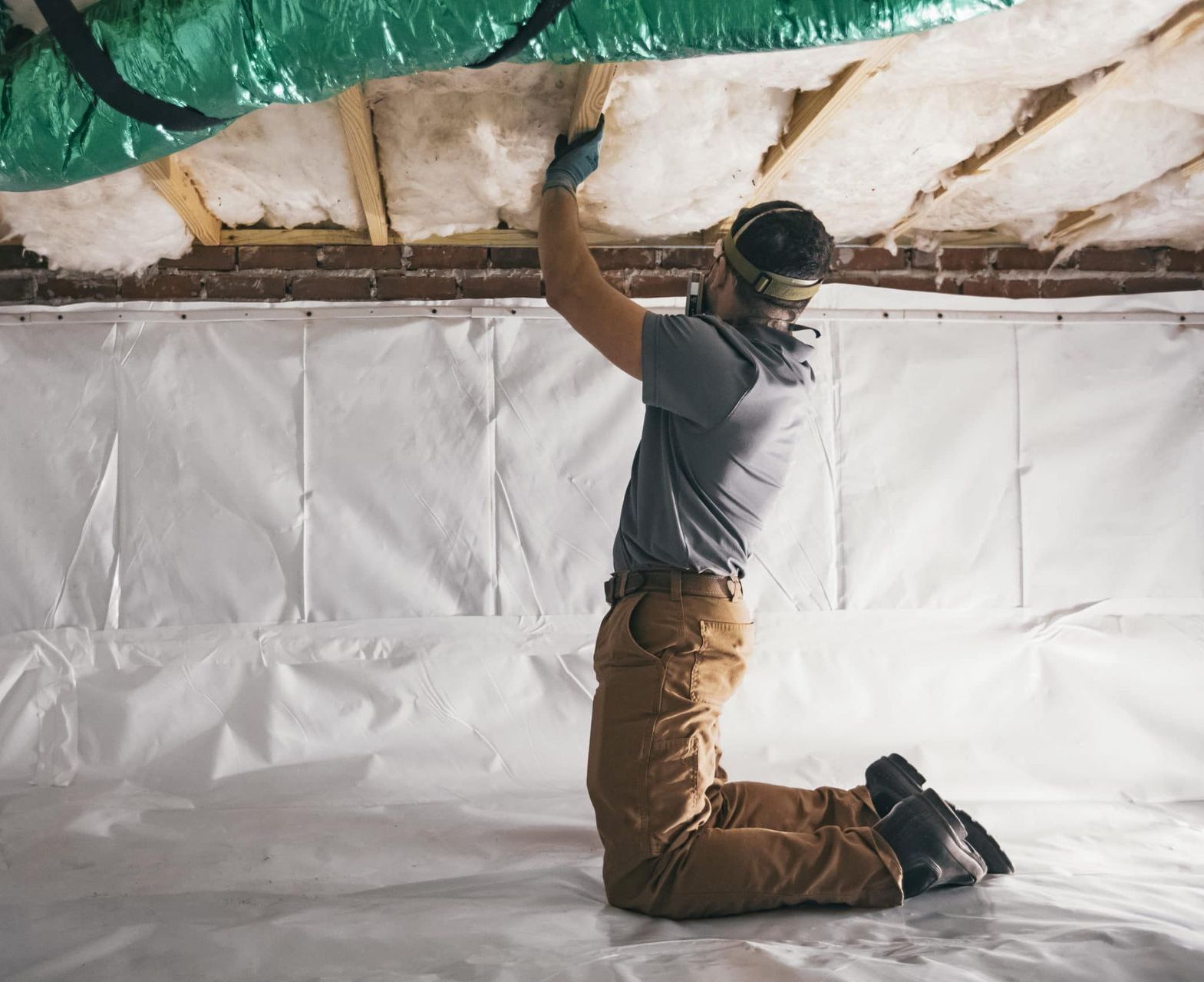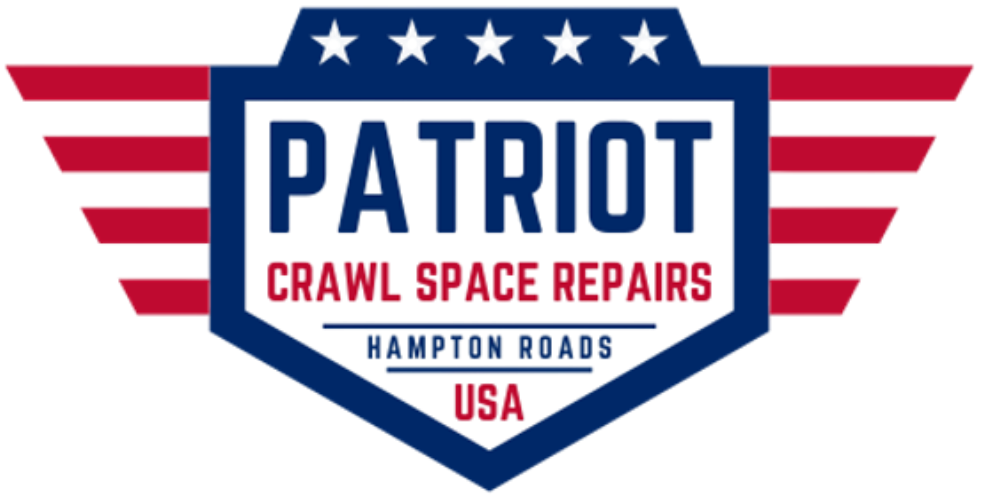The Crawl Space Blog
Expert information and advice on everything crawl space related.
Watch The Youtube Video
Do Your Really Need Crawl Space Insulation?

Do You Need Crawl Space Insulation?
Most homeowners assume every crawl space needs insulation. But when a crawl space is properly sealed and dehumidified, insulation under the floor — or on the walls — becomes unnecessary. In fact, it can cause more problems than it solves.
At Patriot Crawl Space Repairs, we’ve inspected thousands of crawl spaces across Hampton Roads. We see the same thing over and over: wet, sagging fiberglass insulation that traps moisture, hides damage, and adds zero comfort or efficiency.
Let’s explain why modern crawl space systems don’t need insulation, and why removing it is often the best thing you can do for your home.
Why Insulation Was Installed in the First Place
Years ago, builders believed crawl spaces needed to “breathe.” They added foundation vents and stuffed fiberglass between floor joists to block the cold air.
That approach made sense decades ago — but in our humid Virginia climate, it backfires. Warm, wet air enters through those vents, hits the cooler insulation and wood, and forms condensation. The insulation soaks it up, holds it against the floor system, and starts the slow process of rot and decay.
Once a crawl space is sealed and humidity is controlled, the temperature inside stabilizes naturally. In nearly every case we’ve measured, the air under the home stays within about five degrees of the living space — without any insulation at all.
The Problem With Crawl Space Insulation
Fiberglass insulation was never meant to live in a humid, enclosed crawl space. Here’s what always happens:
• It absorbs moisture. Humid air condenses inside the insulation fibers.
•
It sags and falls.
Heavy, wet batts pull loose and hang from the joists.
•
It hides structural problems.
Mold and wood rot spread unseen above it.
•
It collects dust and odors.
Mildew, pest waste, and moisture create that classic “musty crawl space smell.”
Even “intact” insulation often stays damp inside. Once fiberglass absorbs moisture, it can’t be dried out or reused — it’s permanently ruined.
What Happens When You Seal the Crawl Space
When we properly seal a crawl space, we change how it behaves.
Here’s what’s included in our system:
Seal all vents, doors, and penetrations to keep outdoor air from entering.
Install a 10-mil vapor barrier across the ground to block soil vapor.
Add a commercial-grade dehumidifier to maintain 45–55% relative humidity year-round.
That’s it. Once the crawl space is sealed and dry, it becomes part of the home’s stable, conditioned environment. The air temperature under the house stays within a few degrees of the interior, eliminating the need for any insulation at all.
Why We Don’t Recommend Wall Insulation in This Region
Some contractors push foundation wall insulation or spray foam, but in our Hampton Roads region, it simply doesn’t make sense.
Here’s why:
• Most crawl spaces here are low. They don’t have enough clearance for thick insulation without restricting access.
•
Termite inspection gaps are required.
By law, you must leave a visible inspection strip at the top of the wall, meaning you can’t fully insulate the surface anyway.
•
The cost outweighs the benefit.
Partial wall coverage doesn’t deliver enough energy savings to justify the material and labor cost.
•
No noticeable comfort gain.
Once sealed, the crawl space naturally stays within a few degrees of the home’s temperature — so wall insulation doesn’t make the house feel any different.
For homeowners in our area, the smartest investment isn’t wall insulation — it’s proper sealing, moisture control, and air stabilization.
Why Old Insulation Should Be Removed
If your crawl space still has fiberglass insulation under the floor, it’s time to remove it.
• It’s almost always damp. Even when it looks dry, moisture stays trapped inside.
•
It prevents drying.
Wet insulation blocks airflow and keeps wood from drying out.
•
It hides mold and damage.
You can’t treat or repair what you can’t see.
•
It attracts pests.
Rodents and insects love nesting in old insulation.
Once it’s removed and the crawl space is sealed, the improvement in air quality, odor, and appearance is immediate.
The Benefits of Removing Insulation and Sealing the Space
✅ No more wet, sagging fiberglass
✅ Stable temperatures within 5°F of the living area
✅ Lower humidity and zero condensation
✅ Cleaner, fresher air inside the home
✅ Easier access for maintenance and inspections
✅No wasted money on unnecessary materials
Your crawl space becomes a clean, dry, stable environment — not a damp void under your home.
The Patriot Crawl Space Repairs Approach
We don’t believe in selling insulation or add-ons that don’t make sense for our climate. Our focus is on building a sealed, balanced, low-maintenance crawl space that protects your structure and improves air quality.
Our process includes:
• Inspecting humidity, wood moisture, and air leakage
• Removing all old insulation and debris
• Sealing vents, doors, and openings
• Installing a 10-mil vapor barrier and dehumidifier
• Verifying temperature stability within a few degrees of the home
The result: a sealed, uninsulated crawl space that stays naturally balanced year-round — without fiberglass, foam, or wall insulation.
Bottom Line
If your crawl space is properly sealed and dehumidified, you do not need insulation. In our region, adding wall insulation or spray foam simply isn’t worth the cost, because you can’t fully cover the walls due to termite inspection requirements — and there’s no real comfort benefit.
A sealed crawl space will naturally stay within five degrees of the home’s interior, providing a clean, dry, efficient environment without the mess or maintenance of insulation.
📞 Call Patriot Crawl Space Repairs or visit patriotcrawlspacerepairs.com to schedule your crawl space evaluation today. We’ll inspect your crawl space, remove the old insulation, and build a sealed system that keeps it dry for good.



